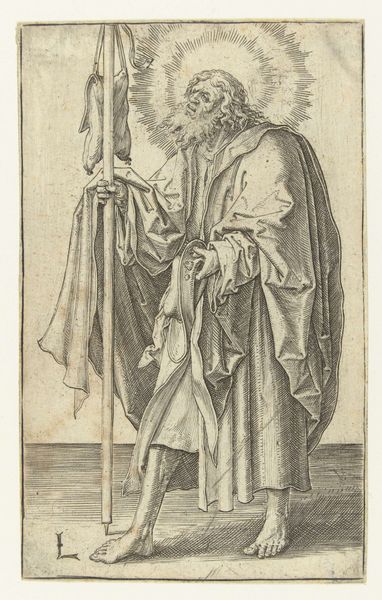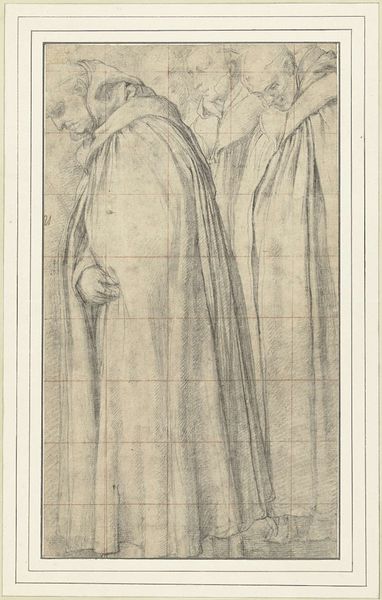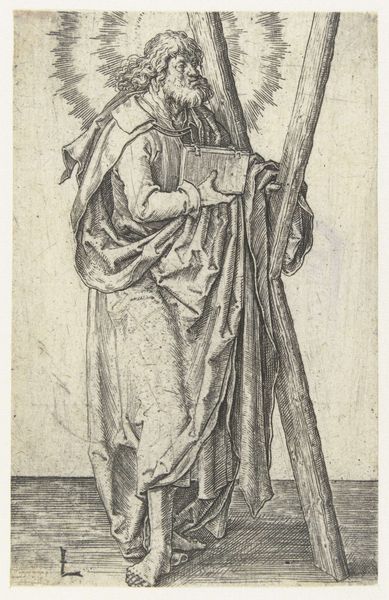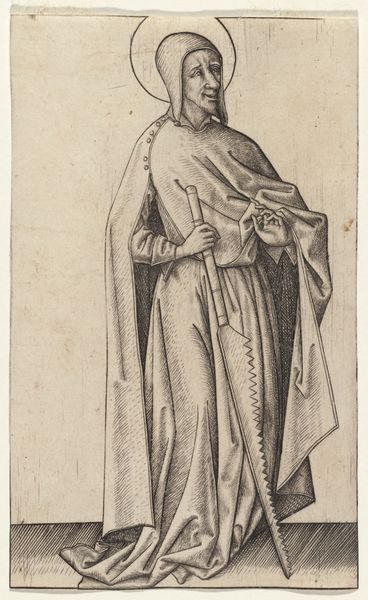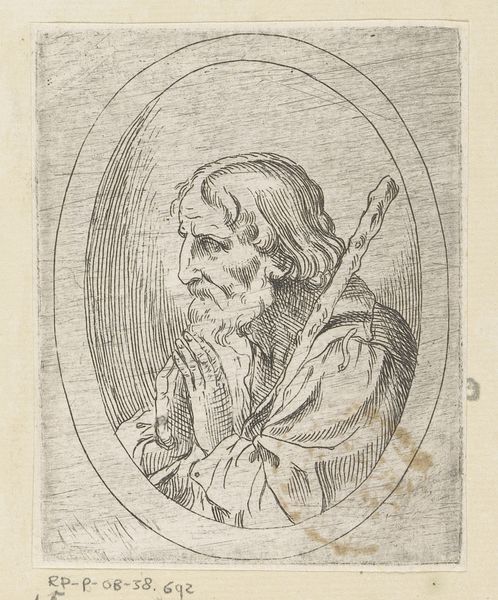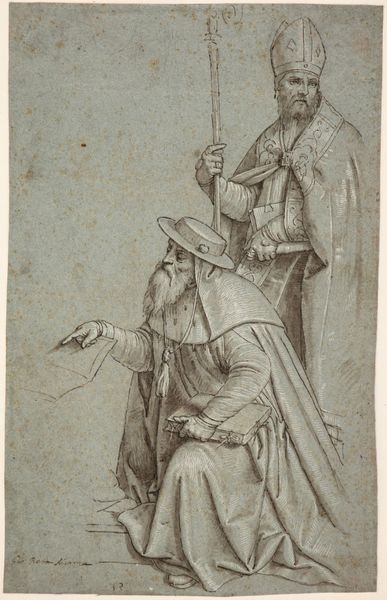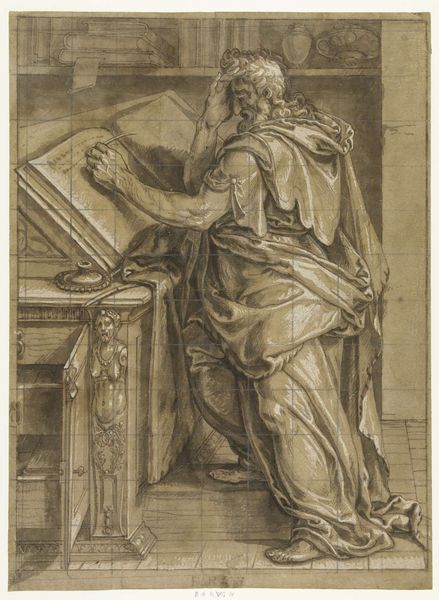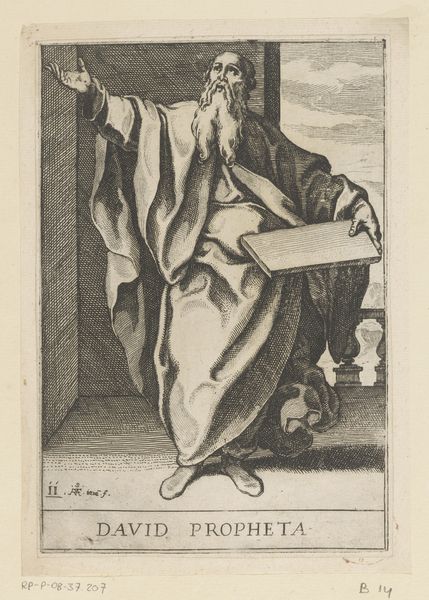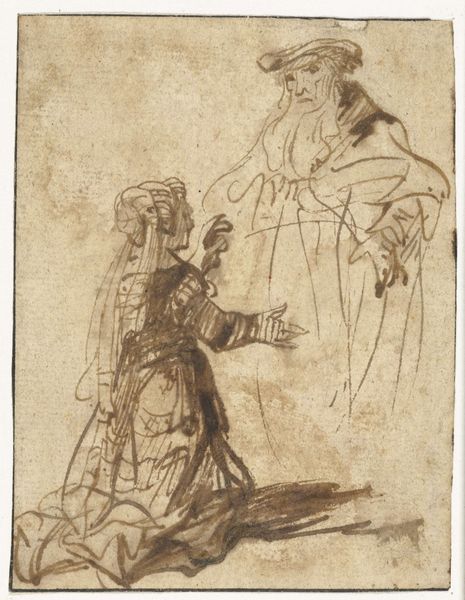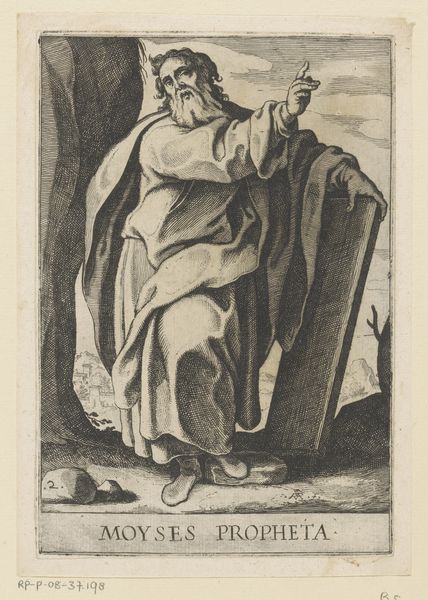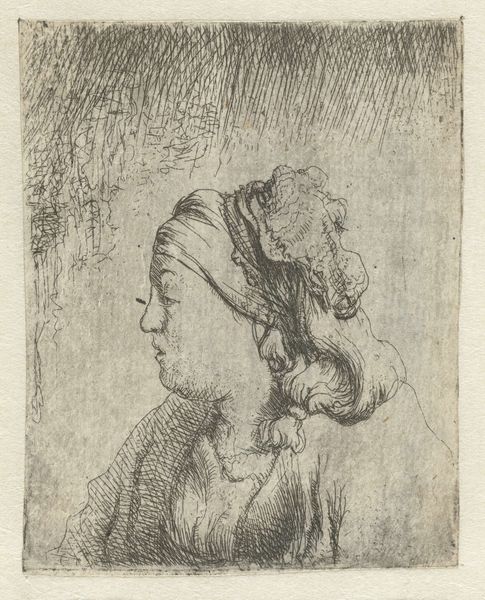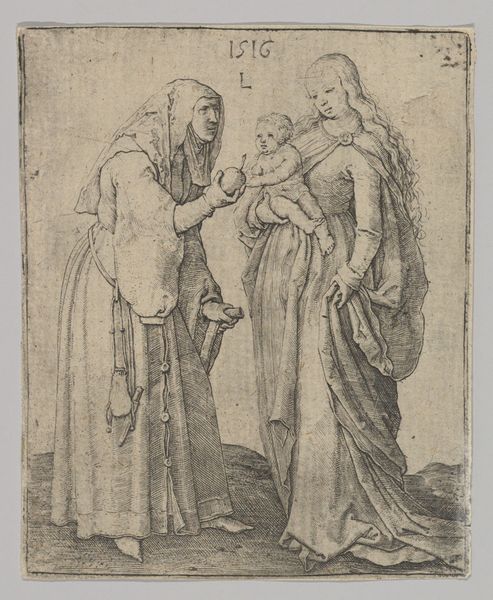
drawing, etching, ink
#
drawing
#
narrative-art
#
baroque
#
etching
#
figuration
#
ink
#
classicism
#
history-painting
Dimensions: height 132 mm, width 100 mm
Copyright: Rijks Museum: Open Domain
Curator: Immediately striking. There's a devotional, almost reverent quality to the artist's gaze. Editor: That's a compelling reading. This drawing, etched in ink by Giovanni Battista Galestruzzi sometime between 1625 and 1669, is titled "Saint Luke Before an Easel." We see the saint depicted as he paints what appears to be an image of the Virgin Mary. Curator: Indeed. Consider the socio-political implications of portraying St. Luke in the act of creation. He isn't simply a divine messenger; he embodies artistic labor itself, legitimizing the role of the artist within the religious and societal framework. The depiction challenges the usual power structures. Editor: From a formal perspective, the composition relies on contrasting textures and directional lines to lead the viewer's eye. The meticulous detail on Luke's robe opposes the looser rendering of the background, emphasizing his figure. And did you notice the subtle lines around his head, suggesting a halo? Curator: Precisely. The halo, of course, isn’t just a visual element, it speaks to Luke's saintly status and thus reinforces the connection between divine inspiration and artistic skill. Consider that Galestruzzi, during the Baroque period, actively engages with representing creative agency, suggesting artists held a unique form of cultural capital, setting precedents we see re-articulated today. Editor: Yes, there's also a narrative thread to the composition itself. St. Luke's concentrated gaze towards the canvas and active motion with his brush and the subtle tilt of the Virgin's painting together creates a scene within a scene—reflecting themes of observation, skill, and artistic creation. The contrast between the relative lightness of the canvas against Luke is quite skillful. Curator: Agreed. Furthermore, in visualizing the artistic process, this etching reflects art's potential as an active instrument capable of contesting, or shaping, societal perspectives and ideologies. It's a form of historical storytelling. Editor: I’ve enjoyed focusing on its structure and composition and have appreciated how you bring broader context of devotional art in the baroque period. Curator: A good analysis comes down to exploring art's intersections within larger cultural, power systems, and history, while you effectively interpret the visual language, and what can be read from line and form.
Comments
No comments
Be the first to comment and join the conversation on the ultimate creative platform.
